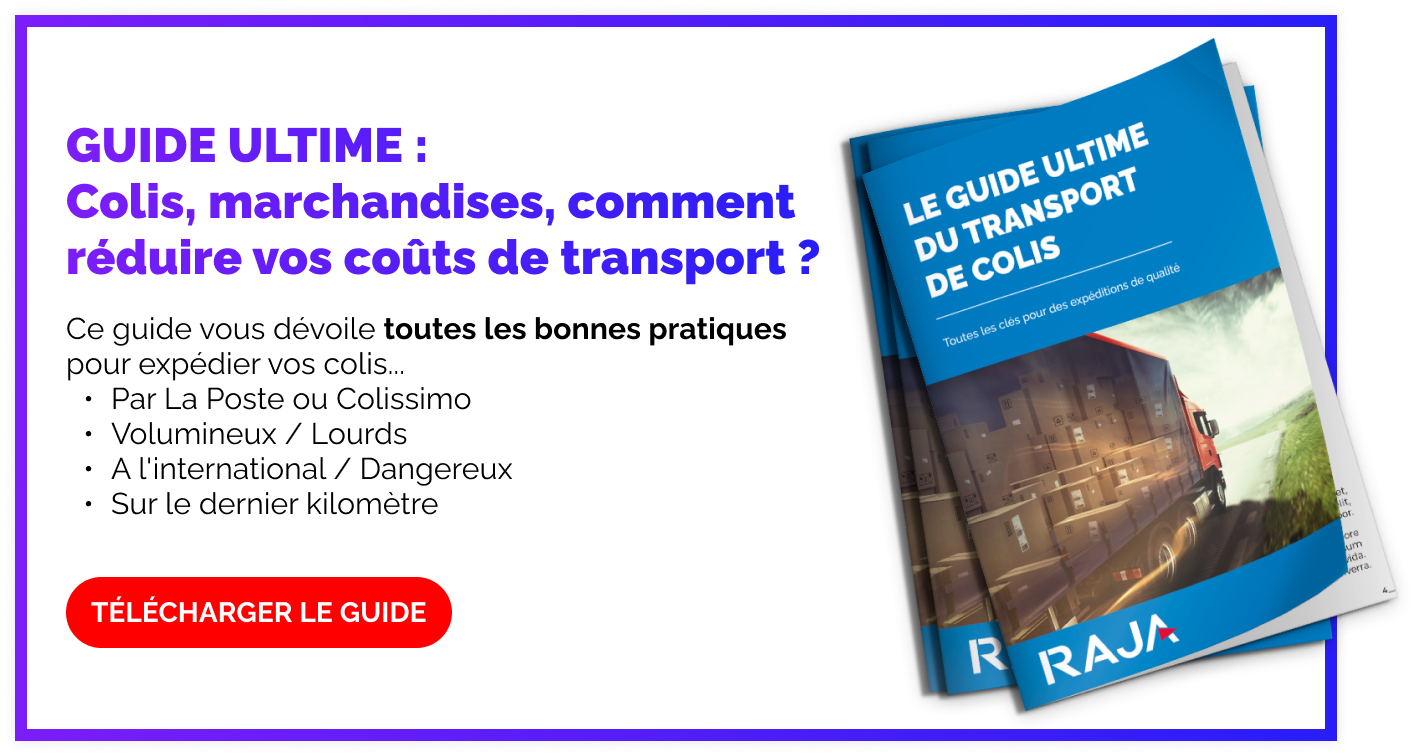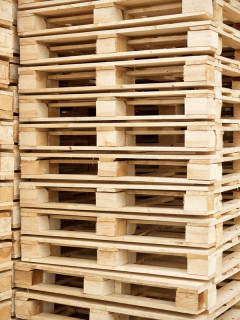From your procurement phase to the final delivery of your goods, your supply chain is full of challenges for you as a logistics manager. All the more so at a time when your customers are increasingly demanding in terms of the quality of the services they receive!
Would you like to take a closer look at the last phase of your supply chain, namely the logistical dispatch of your products?
Use the following five questions to draw up a checklist of actions you can take to improve your shipping, and satisfy your customers right through to the final delivery of their order.
Does your order preparation process enable rapid dispatch?
Optimum logistics shipping means meeting delivery deadlines. And if you don’t prepare your orders as quickly as possible, you run the risk of not being able to keep to what is stated in your general terms and conditions of sale!
That’s why the picking and packing phases of your orders in the warehouse need to be as fluid as possible – to ensure that the goods can be delivered quickly afterwards.
To achieve this, start by organising your warehouse according to the storage method that best suits your business. Many structures decide to follow the ABC method, which is based on the rate of turnover of products in the warehouse. But you could potentially need the LIFO (Last In, First Out) method if you store and ship perishable products, for example.
To find out more about this crucial point, read our article “Which storage method for optimised logistical picking?
You should also make sure that your operators areequipped with handling equipment that makes their picking more fluid. For example:
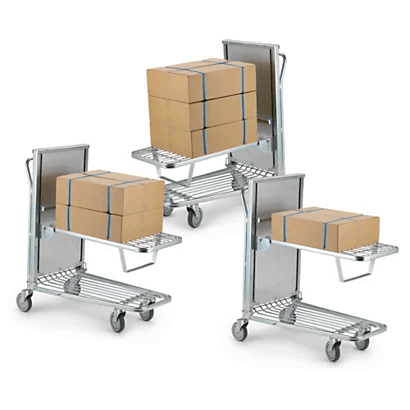 |
The constant level trolley allows them to select products without ever having to bend over – the trolley tray is always at the right height, whatever the load placed on it. |
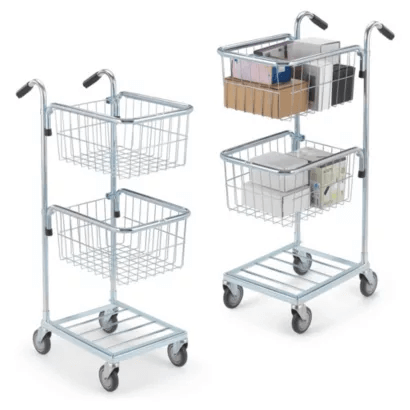 |
The basket trolley makes it easy to pick small products. |
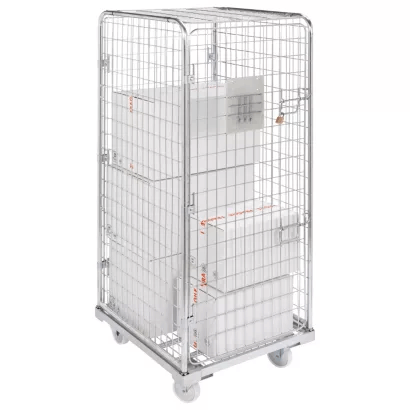 |
Rollers make it easy to move larger goods around the warehouse. |
Once the picking phase has been optimised, you need toorganise your order preparation area as well as possible. To do this, you need to make your packing station as ergonomic as possible, so that operators have all the utensils and materials they need within easy reach, to speed up the packing phase.
Find out here how to choose your packing station and table.
Finally, don’t forget to choose time-saving packaging. This packaging is designed to be simple to assemble and fill – such as instant-assembly crates, which are formed by simply pressing on the sides.
Does your transport provider care about your customer experience?
A quality logistical shipment also means a delivery that takes into account the experience your end customer is going to have. Today’s customers are increasingly sensitive to fast, flexible and seamless deliveries.
That’s why you need to check the delivery quality offered by your carriers on a daily basis:
- Do they have good parcel tracking technology? Your customers need to be able to see the delivery status of their order at all times, just like your after-sales service.
- Do they offer real flexibility in terms of delivery date and method? For example, if your customer is absent on the first delivery, can the delivery person leave the parcel in a safe place? Or does an application allow customers to reschedule their delivery?
Note also that packaging also plays a part in the customer’s experience of delivery.
Consider, for example, the possibility of having your orders delivered immediately to the letterbox, by choosing standard-sized packaging for small parcels. To do this, select postal packaging such as envelopes, boxes or extra-flat crates.
Does your packaging create a “wow” effect when the parcel arrives?
Working on the customer experience around your logistics shipments also means aiming for a real “wow” effect when your parcels arrive in the hands of your end customer. This is where packaging plays a key role.
Make sure that your packaging takes care of theunboxing of your products. It should be easy to open (with an integrated tear strip, for example), and its cushioning should be elegant (tissue paper or personalised kraft paper look best, for example). Make sure that the invoice or order form is well displayed, in a neat pocket. You can also include small goodies and gifts with each order. The aim: to leave a strong trace of your brand in your customers’ memories!
You could also consider personalised packaging. You can personalise your packaging in your brand’s colours, printing your logo, a slogan or one of your current marketing offers.
For example, why not print a QR Code on your packaging to make it a connected package that enhances your customers’ logistics shipping experience right up to the Internet – where they can discover an extra promotion, a video, or your order return process?
Is your service provider eco-responsible?
Your customers are paying more and more attention to how the companies they buy from protect the environment. The transport of goods accounts for a large proportion of CO2 emissions and pollution, particularly in urban areas.
Your logistics dispatch strategy must therefore take this eco-responsibility criterion into account, so that you choose environmentally responsible carriers.
There are several options available to you:
- For your last-mile deliveries, i.e. your deliveries in urban areas, you can call on service providers who deploy delivery personnel on bicycles and cargo-cycles.
- For road transport, you should know that some carriers have a fleet of trucks that run on NGV (Green Natural Gas) or BioGas. Others have signed up to the ADEME charter for more eco-responsible transport.
Whatever your choice, always include the notion of eco-responsibility in your criteria for selecting your logistics service providers.
Are your logistics shipping costs optimal?
The last question to ask yourself about your logistics shipping process is whether your transport budget is really optimised. This part of your transport and logistics budget is particularly substantial – and the keys to reducing it are simple.
These costs are linked in particular to the weight of your shipments. For express and international deliveries, as well as sea and air transport, logistics providers charge according to the weight-volume of your packaging.
So to keep your costs down, you need to make sure you protect your goods as well as possible, while keeping your parcels as empty as possible, so that you are invoiced as closely as possible to your real needs.
Another area for optimisation: you can try to review your dispatch times if necessary – because express delivery is the most expensive, and it’s the one where you’re billed by weight-volume. So, when you place an order on your website, offer your customers the option of receiving their parcel later. By doing this, you are trying to reduce your costs without damaging their customer experience.
Finally, don’t forget to conduct regular transport tend ers to ensure that you get the best quality of service at the best price.
To find out more, read our article “Calculating the price of freight transport: what you need to know to reduce your costs”.
Have you asked yourself these five questions about your logistics shipments? Perfect: now it’s up to you to make deliveries that focus on performance and the customer experience, so as to win the loyalty of your customers without damaging your logistics costs!












